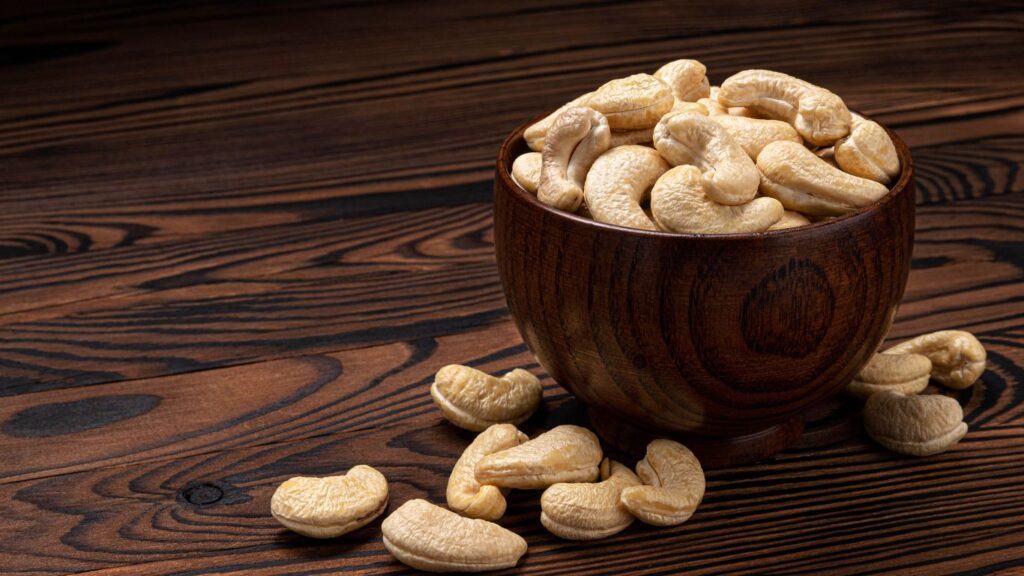Did you know that despite their small size, dry fruits pack a nutritional punch that can significantly impact your health? Often hailed as nature’s candy, dry fruits are not just a convenient snack; they are also a powerhouse of nutrients, including vitamins, minerals, fiber, and antioxidants. Their importance in a balanced diet cannot be overstated, as they offer a myriad of health benefits ranging from improved digestion and enhanced heart health to better weight management. However, the key to unlocking these benefits lies not just in consuming them but in doing so correctly. This blog aims to shed light on the nutritional insights of dry fruits and guide you through the right ways to incorporate them into your diet. By understanding the optimal methods of consumption, you can maximize the health benefits of dry fruits, turning them from a simple snack into a strategic component of your daily nutrition.
Dry Fruits: Are You Eating Them Right? A Nutritional Insight
Understanding Dry Fruits
Dry fruits are fruits from which the majority of the original water content has been removed either naturally, through sun drying, or through the use of specialized dryers or dehydrators. This process concentrates the fruit’s sugar, nutrients, and flavor, making dry fruits a nutrient-dense snack. Popular dry fruits include raisins, dates, figs, apricots, and various nuts such as almonds, walnuts, and cashews.
The nutritional profile of dry fruits is impressive; they are rich in essential vitamins such as Vitamin A (in apricots), Vitamin C (in dried cherries), and Vitamin E (in almonds). They are also a great source of minerals like potassium, iron (found in raisins), and calcium (found in figs). Additionally, dry fruits are high in dietary fiber and antioxidants, contributing to a range of health benefits.
Consuming dry fruits can lead to improved digestion thanks to their fiber content, which helps to prevent constipation and promote a healthy gut. The antioxidants found in dry fruits, such as flavonoids and phenols, contribute to heart health by reducing inflammation and lowering the risk of heart disease. Moreover, the fiber and healthy fats in nuts, a type of dry fruit, can aid in weight management by helping to control hunger and thereby reduce overall calorie intake. Incorporating dry fruits into your diet can thus play a crucial role in maintaining and enhancing your health.
Common Mistakes in Consuming Dry Fruits

Overconsumption Risks:
- Calorie Overload: Dry fruits are high in calories and sugars. Consuming them in large quantities can lead to excessive calorie intake, which may contribute to weight gain and associated health issues.
- Sugar Intake: Many dry fruits, especially those that are candied or sweetened, contain high levels of added sugars. Overconsumption can increase the risk of developing dental problems, diabetes, and other metabolic disorders.
- Digestive Discomfort: The high fiber content in dry fruits is beneficial in moderation but can cause digestive discomfort, such as bloating and gas, when consumed in excess.
Importance of Variety:
- Nutrient Range: Different dry fruits offer different sets of nutrients. For instance, almonds are rich in Vitamin E and calcium, while dried apricots are a good source of Vitamin A and iron. Consuming a variety ensures a broader intake of essential nutrients.
- Antioxidant Benefits: Variety also means a wider range of antioxidants, which can protect the body from oxidative stress and reduce the risk of chronic diseases.
- Avoid Nutrient Imbalances: Relying on just one or two types of dry fruits can lead to imbalances or deficiencies in certain nutrients. A varied diet helps prevent this issue.
Preparation Methods Matter:
- Reducing Phytates: Soaking nuts and seeds can reduce phytate content, which in turn enhances mineral absorption. Phytates can bind to minerals like zinc and iron, preventing their absorption.
- Enhancing Digestibility: Soaking and sprouting can also improve digestibility by breaking down complex sugars, making dry fruits gentler on the digestive system.
- Nutrient Preservation: Some preparation methods, such as gentle drying or freeze-drying, can better preserve the nutritional value of fruits compared to others that involve high temperatures or added sugars.
How to Eat Dry Fruits the Right Way
Portion Control:
- Serving Sizes: A standard serving of dry fruits is about 1/4 cup (40 grams) for dried fruits and 1 ounce (28 grams) for nuts and seeds. This roughly equates to a small handful, ensuring a balanced intake without overloading on calories.
- Calorie Consideration: Given their high-calorie content, it’s crucial to adjust portions based on daily calorie needs and physical activity levels. For those monitoring calorie intake, measuring portions rather than estimating can help maintain balance.

Best Times to Consume:
- Post-Workout: Consuming dry fruits like dates or raisins post-exercise can provide a quick energy boost and help replenish glycogen stores due to their natural sugars and potassium.
- As Snacks: A small portion of mixed nuts and dried fruits makes an excellent mid-morning or afternoon snack, offering sustained energy and preventing overeating at meal times.
- With Meals: Adding dry fruits to meals can enhance nutritional content. For example, chopped nuts or dried berries in morning oatmeal or salads add both texture and nutrients.
Preparation Tips:
- Soaking Nuts and Seeds: Soaking nuts and seeds overnight can reduce phytate content, improving mineral absorption and digestibility.
- Roasting: Lightly roasting nuts can enhance their flavor without adding fats or salts. However, it’s important to avoid burning, as this can degrade nutrients.
- Pairing with Other Foods: Combining dry fruits with sources of vitamin C (like citrus fruits or bell peppers) can enhance iron absorption, especially beneficial for vegetarians and vegans.
Incorporation into Meals:
- Breakfast: Add dried fruits like figs, apricots, or berries to cereals, yogurts, or pancakes for a nutritious start to the day.
- Lunch and Dinner: Sprinkle nuts or seeds over salads or blend them into dressings for an added crunch and nutrient boost. Dried fruits can also be incorporated into rice dishes or stews to add a sweet contrast.
- Snacks and Desserts: Create your own trail mix with a variety of nuts, seeds, and dried fruits for a healthy snack. For desserts, consider using dates or figs as natural sweeteners in smoothies, energy bars, or baking.
Choosing and Storing Dry Fruits
When selecting high-quality dry fruits, it’s crucial to opt for unsulfured and unsweetened varieties to maximize health benefits. Unsulfured dry fruits are free from sulfur dioxide, a common preservative that can cause allergic reactions in some individuals and may detract from the fruit’s natural taste and nutritional value. Look for labels that indicate “no added sugar” or “unsweetened” to avoid consuming excess sugars that can often be added to enhance flavor. The natural sweetness and nutrients of dry fruits are sufficient for a healthy snack.
For storage, keep dry fruits in airtight containers to protect them from moisture and pests, which can spoil the fruits and degrade their quality. Storing them in a cool, dark place like a pantry or refrigerator can further extend their shelf life by slowing down the degradation of nutrients and preventing rancidity, especially for nuts and seeds. Proper storage ensures that dry fruits retain their flavor, texture, and nutritional benefits for longer periods.

Conclusion
Dry fruits are a nutrient-dense snack that can offer a plethora of health benefits, from improved digestion and heart health to aiding in weight management. However, maximizing these benefits requires mindful consumption, including paying attention to portion sizes, diversifying intake, and considering preparation methods. Additionally, selecting high-quality, unsulfured, and unsweetened options, along with proper storage, can enhance the nutritional value and freshness of dry fruits. By incorporating these insights into your dietary habits, you can enjoy the delicious and healthful advantages of dry fruits in the most beneficial way. Remember, when it comes to dry fruits, how you eat them is as important as eating them.
Also read: Figs: The Secret Ingredient for Muscle Recovery and Growth
